M-209 Workings - Mechanical view
M-209 Workings Home Page
- M-209 Overview
-
Using
(Ciphering/Deciphering) - Inner setting
- Mechanical view
- Mathematical view
- Computer view
- Paper analog
Prepare the machine
Before cipher (or decipher) a text, we must prepare the machine by setting the key in accordance of our cipher organization.
The key is divided in two parts:
- The internal key
- The external key
For the internal key, we use the example present in TM 11-380 manual of 1944.
We set the external key to "PEOPLE"
The basic principle, the role of typewheel during ciphering (or deciphering)
In M-209, the most important part is the typewheel which have three alphabets. Here are the three alphabets (from left to right):
- The indicator disk has an alphabet in clock wise (if we look at the typewheel from the left side)
- The reproducing disk has an alphabet in counter clock wise.
- The typewheel disk has an alphabet in counter clock wise. The letters of this alphabet are horizontal. The letters of the others alphabets are vertical.
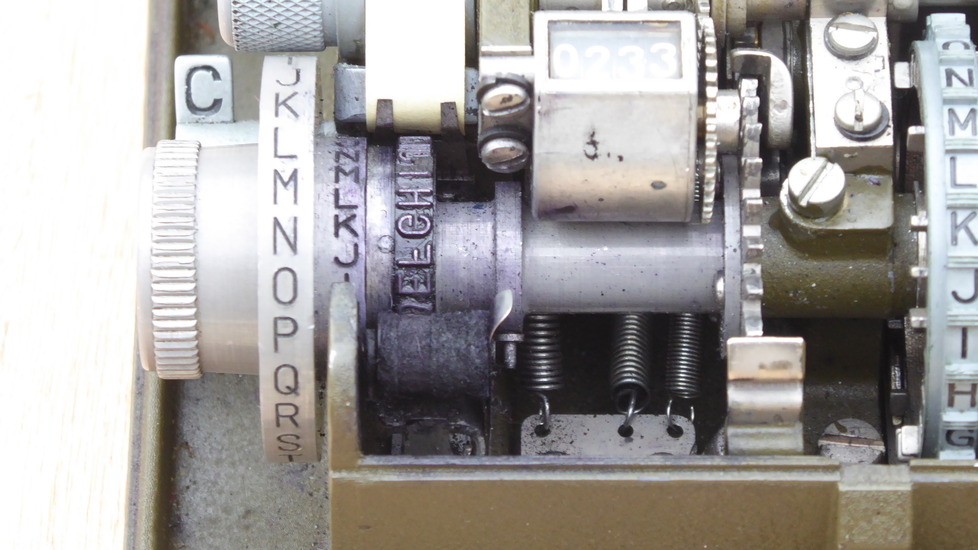
|
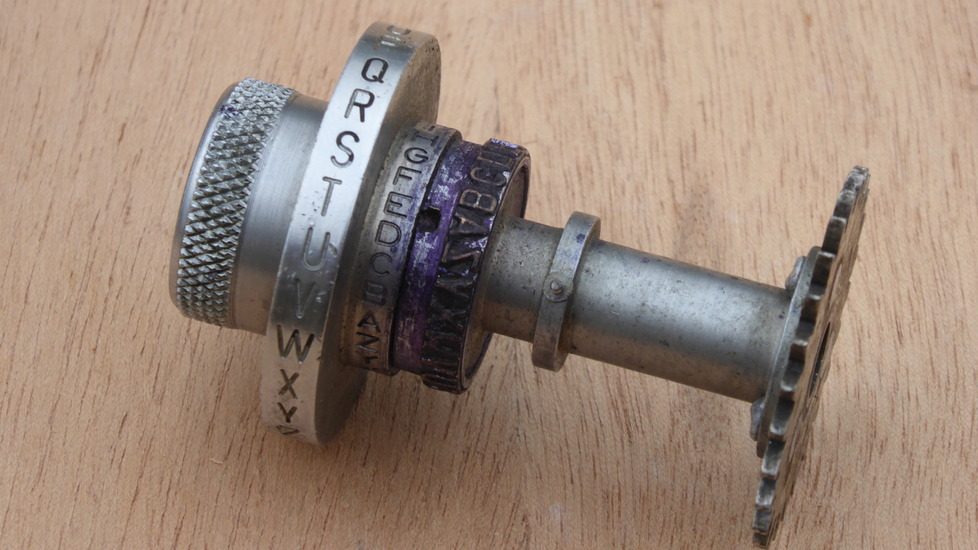
|
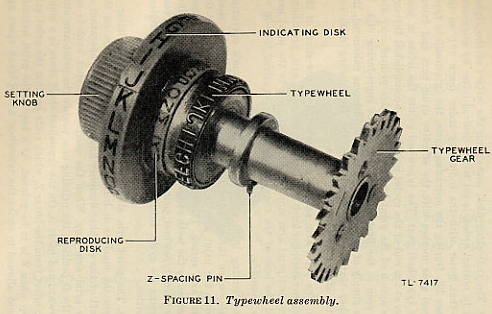
|
The code clerk chooses a letter (a plain letter or a ciphered letter) on the indicator disk, I.E, he turns the typewheel to put the letter in front of the bench mark. Then he actions the drive knob, the typewheel turns (in counter clock wise) of several letters.
The code clerk can see the result (the ciphered letter or the plain letter) on the reproducing disk.
At the same time, the printer mecanism printed the result too by means of the typewheel disk.
Remark:
The M-209 cipher is reversible: The ciphering and deciphering is identical
because the alphabet on the reproducing disk is in reverse order relative
to the indicator disk. In contrary, the B-21 cipher machine isn't
reversible. On this machine there is a selector which can be use to put
the machine in cipher mode or decipher mode. In M-209 there is a selector
which toogle from cipher mode to decipher mode but its action doesn't
change ciphering but only the presentation: In cipher mode, the letters
are printed by group of 5 letters and in decipher mode, the Z letter is
replaced by a space.
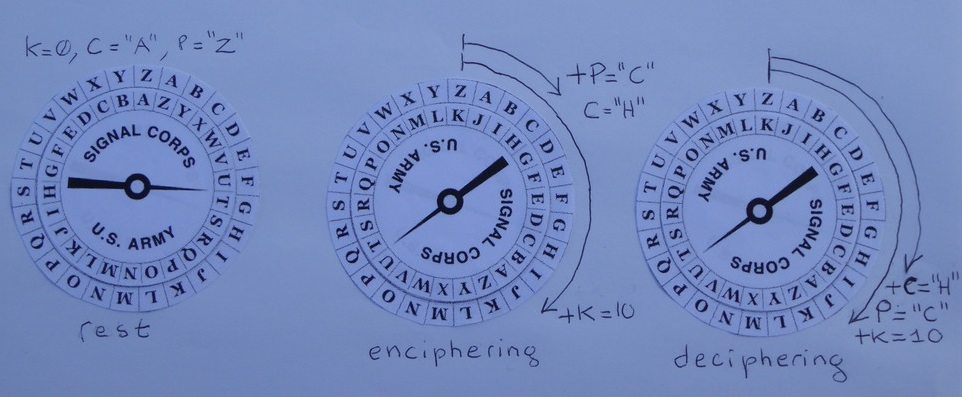
The internal mechanism (Drum bars and Wheel pins)
We have just seen that the typewheel turns. But why is it moving?The operator turns the driveknob. Each of the 27 drum bars passes front of the guide arms. If at least one of the two lugs of a bar is in effective position front of a guide arm which is pushed forward, so the bar that carries the lug is shifted to the left and turns the Typewheel of one letter (in clockwise) by means of intermediary gear.
Then, during the motion, the typewheel turns from zero to 27 letters depending on which guide arm is forward and how many lugs are in effective positions front of them.
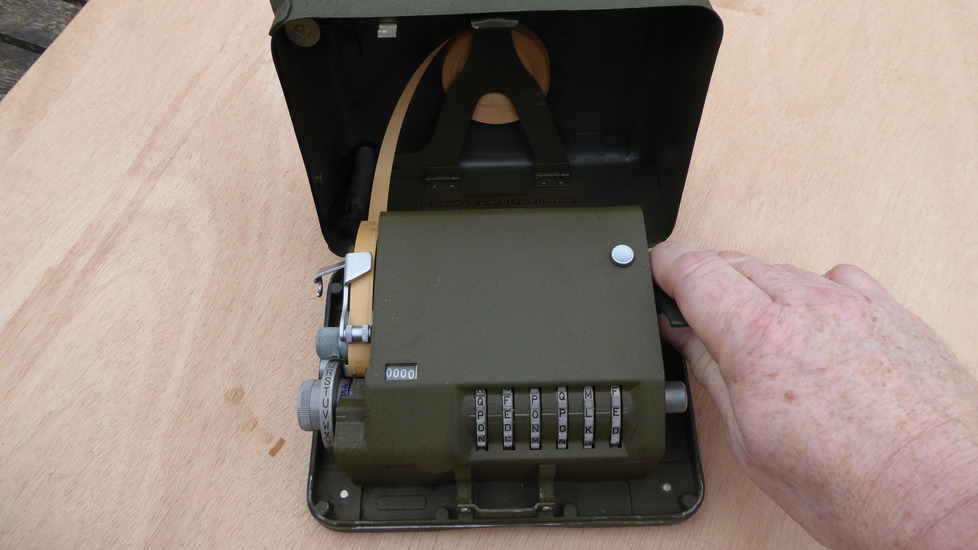
|
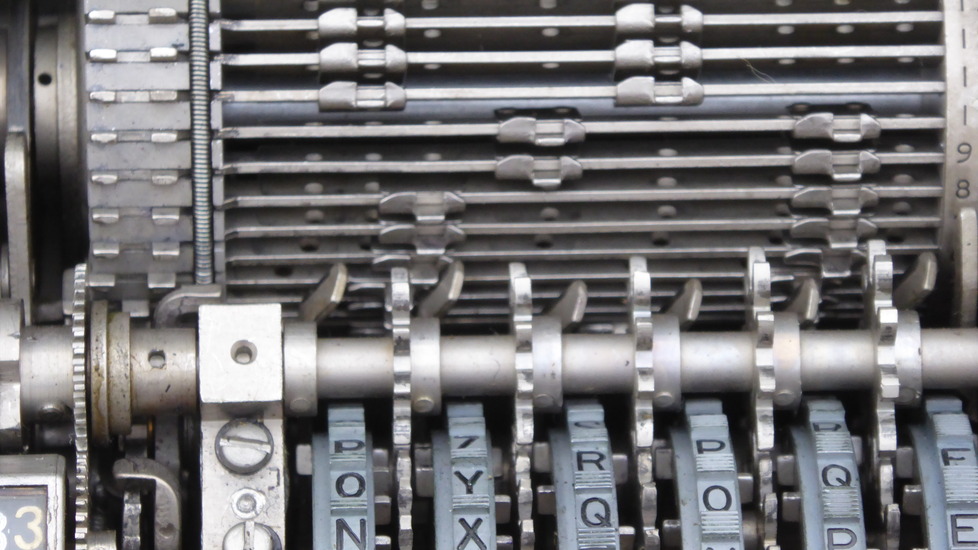
|
| Operator actions the drive knob | Guide arms (active pins: 110001) |
When driveknob ends his turn, several operations take place:
- A letter is printed.
- All the Key-wheels advance one step in clockwise direction. Active pins act on guide arms and position them for encryption of the following letter.
- The counter is incremented
References
- M-209 Manual : TM 11-380, 1944